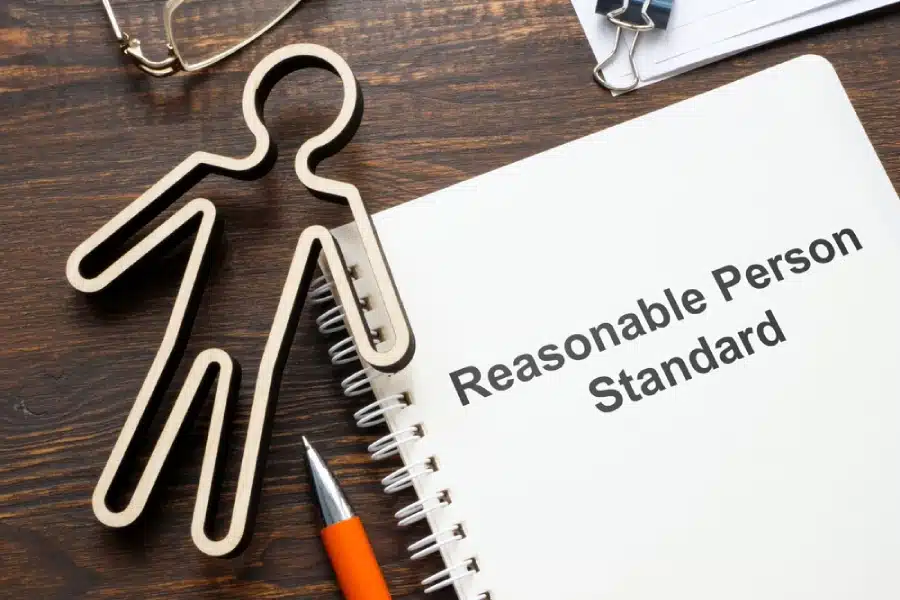How the Reasonable Person Standard Shapes Personal Injury Cases
Summary:
- The reasonable person standard is a legal benchmark used in Florida personal injury cases to determine negligence by comparing actions to those of a hypothetical reasonable person.
- Courts assess whether a defendant’s behavior deviated from how a reasonable person would have acted under similar circumstances, impacting liability and compensation.
- Negligence must be proven by establishing duty of care, breach of duty, causation, and damages.
- If someone’s actions didn’t meet the reasonable person principles and caused harm, legal guidance can help hold them accountable and secure fair compensation.

You may already be aware, but if not, establishing negligence is one of the more pivotal steps toward securing justice and compensation for your injuries when pursuing a personal injury claim in Florida.
The reasonable person standard is central to this entire process, a legal benchmark used to assess whether an individual’s actions were negligent. This standard evaluates how a hypothetical reasonable person would have acted under similar circumstances, providing a basis for determining liability.
How does the reasonable person standard shape your personal injury case? Let’s dive into how the reasonable person standard plays a crucial role in shaping these cases.
Defining the Reasonable Person Standard
The reasonable person standard is a legal concept used to determine whether an individual’s behavior aligns with what is expected in each situation. It asks whether a typical person, like you or me—exercising ordinary prudence—would have acted the same way under comparable circumstances.
This standard is foundational in personal injury law, as it helps courts evaluate if someone has failed to act with the care that a reasonable person would have exercised, thereby constituting negligence.
Qualities of a Reasonable Person?
A reasonable person is characterized by behaviors and decision-making processes that reflect caution, attentiveness, and foresight. This hypothetical individual is expected to:
- Act with the level of caution and concern for safety that is typical in everyday situations.
- Recognize and foresee the risks resulting from their actions or inactions.
- Base actions around or on rational thought processes, considering the potential consequences.
- Follow established rules, regulations, and social norms designed to protect the well-being of others.
These qualities serve as a measuring stick against which actual behavior is compared in legal settings.
Applying the Reasonable Person Principle in Personal Injury Cases
In a personal injury case, the reasonable person principle assesses whether the defendant’s conduct deviated from what is expected under the reasonable standard rule. This involves examining the incident’s circumstances to determine if a reasonable person in the same situation would have acted differently.
For example, consider a scenario where a driver runs a red light and causes an accident. A reasonable person is expected to obey traffic signals to prevent harm to others. By running that red light, the driver has failed to act as a reasonable person would, thereby breaching their duty of care. This bread can be deemed negligent, making the driver liable for any resulting personal injuries.
The Reasonable Standard Rule
The reasonable person standard rule is a guideline for expected behaviors in society. It establishes that individuals must act with the same level of care that a reasonable person would under the same situations. Failure to meet this standard, resulting in harm to another, can often lead to a finding of negligence.
Establishing Negligence Through the Reasonable Person Standard
In most cases, to prove negligence in a Florida personal injury case using this standard of a reasonable person, the following elements must be demonstrated:
- Duty of Care. The defendant owed a legal obligation to act with reasonable care toward the plaintiff.
- Breach of Duty. The defendant’s actions or inactions failed to meet the reasonable person standard, constituting a breach.
- Causation. The breach directly caused the plaintiff’s injuries.
- Damages. The plaintiff suffered actual harm or losses as a result.
These elements must be established to hold the defendant legally responsible and accountable for the plaintiff’s injuries.
Count on the Expertise of the Distasio Law Firm
By understanding the reasonable person standard, you can empower yourself to navigate personal injury claims in Florida. It serves as the foundation for determining negligence and liability. If you believe someone failed to act as a reasonable person and are currently suffering from injuries and attempting to seek justice on your own, we’re here to help. Seeking professional, expert legal guidance is essential to your case, and at Distasio, we are committed to fighting for you.
At Distasio, it is imperative that we hold wrongdoers accountable and that you get the compensation and justice you are due. Do not suffer alone. Contact us and count on Distasio Law Firm for your personal injury cases—where justice isn’t just another word for us.

As an ethical and trusted Tampa personal injury lawyer, Scott Distasio founded Distasio Law Firm in February of 2006, which focuses on all types of personal injury cases. He wanted to open a law firm that represented his belief that all firms should provide ethical and outstanding service to their clients.


